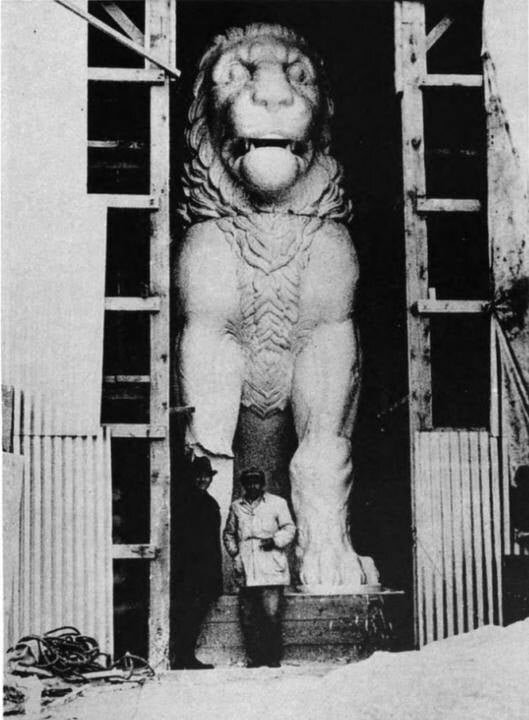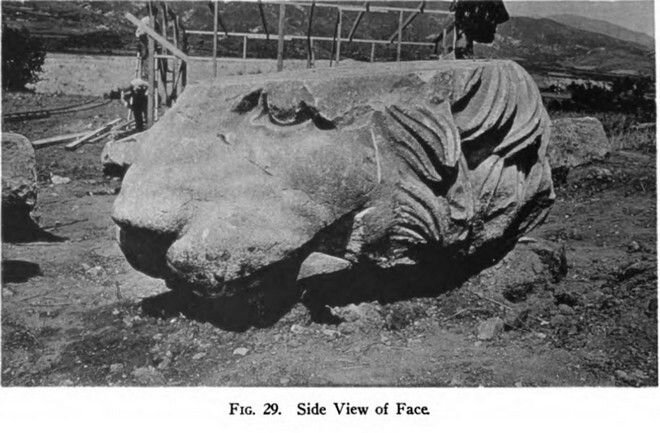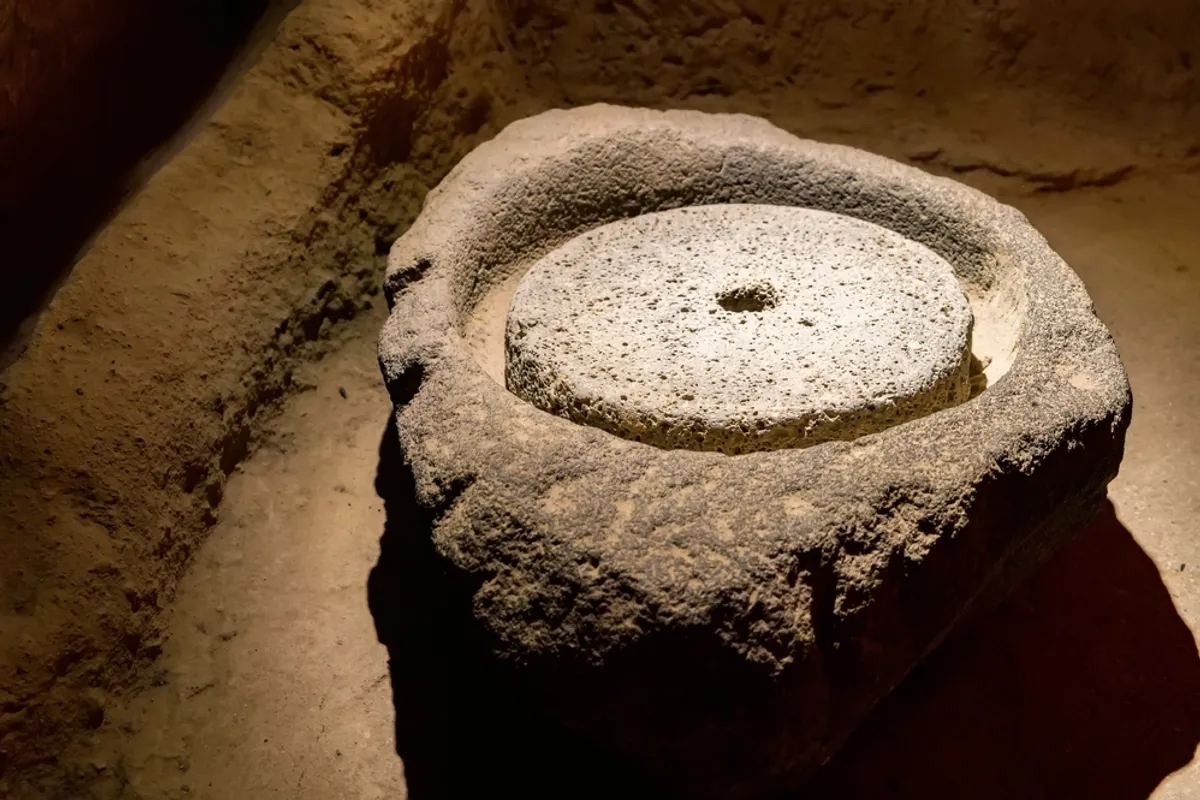The Lion of Amphipolis (Greek: Λέων της Αμφίπολης) is a 4th-century BC tomb sculpture in Amphipolis, Macedonia, northern Greece. According to Oscar Broneer and archaeologist Dimitris Lazaridis, the first person excavating in the area in the 1960s, it was set up in honor of Laomedon of Mytilene, an important general of Alexander the Great, king of Macedon.
The finding of the monument is connected to the modern history of Macedonia in Greece, as the first parts of it were found initially by Greek soldiers during the First Balkan War that had camped in the area during 1912–13. They were followed by British soldiers a few years later in 1916, during World War I, who also discovered significantly large parts of the monument. The British tried to steal the pieces, but a Bulgarian attack prevented their plans.
In the early 1930s, during works for drying part of the Lake Kerkini nearby, there was a discovery of an ancient bridge and close to it within the mud of the river further, very large pieces of the marble lion. In 1937, and thanks to Lincoln MacVeagh, the US ambassador in Greece at the time, there was a private initiative along with support and funds from the Greek government to restore the Lion of Amphipolis, which eventually came to be in its current form. The whole process has been documented thoroughly by Oscar Broneer in his book The Lion of Amphipolis published in 1941.
Although in seated position, the lion is larger and bulkier than the one erected at Chaeronea and has a height of more than 4 meters in its main body. Taking into account the base, it is taller than 8 meters. The head has a width of 2 meters. Its craftsmanship shows a work of the 5th or first half of 4th century B.C. As to when it was erected, there is no agreement between experts as there is no mention of it in ancient sources.
There was recent speculation that the lion used to be on top of the Kasta Tomb. but this theory has now been discounted.
Kasta Tomb
The Kasta Tomb (Greek: Τύμβος Καστά), also known as the Amphipolis Tomb (Greek: Τάφος της Αμφίπολης), is an ancient Macedonian tomb that was discovered inside the Kasta mound (or tumulus) near Amphipolis, Central Macedonia, in northern Greece in 2012 and first entered in August 2014. The first excavations at the mound in 1964 led to exposure of the perimeter wall, and further excavations in the 1970s uncovered many other ancient remains.
Kasta tumulus – view from Amphipolis
The recently discovered tomb is dated to the last quarter of the 4th century BC. The tumulus is the largest ever discovered in Greece and by comparison dwarfs that of Philip II of Macedon, father of Alexander the Great, in Vergina. The excavation team, based on findings unearthed at the site, argued that the tomb was a memorial dedicated to the dearest friend of Alexander the Great, Hephaestion.
Kasta tumulus and Amphipolis location map.











